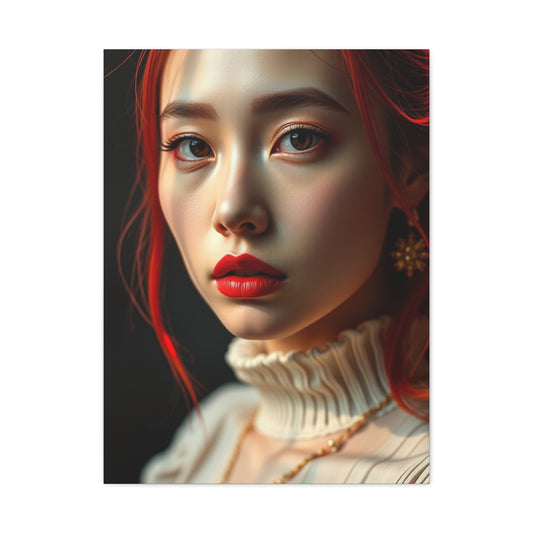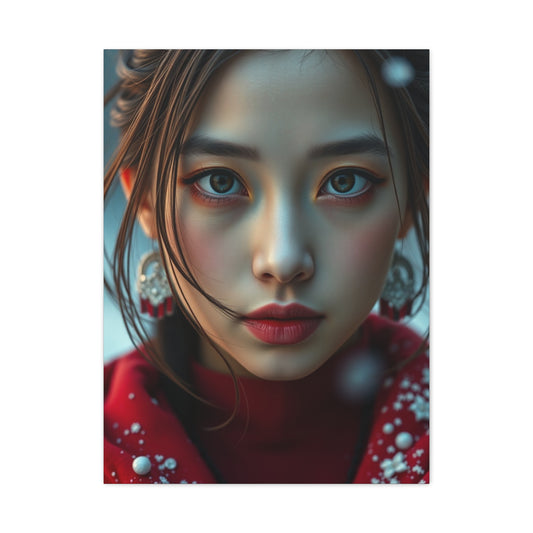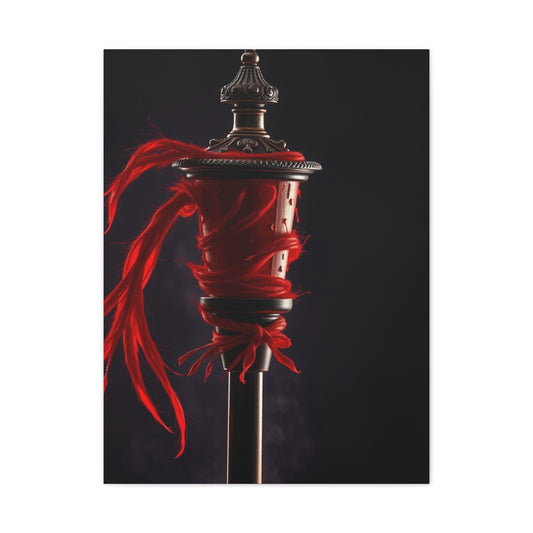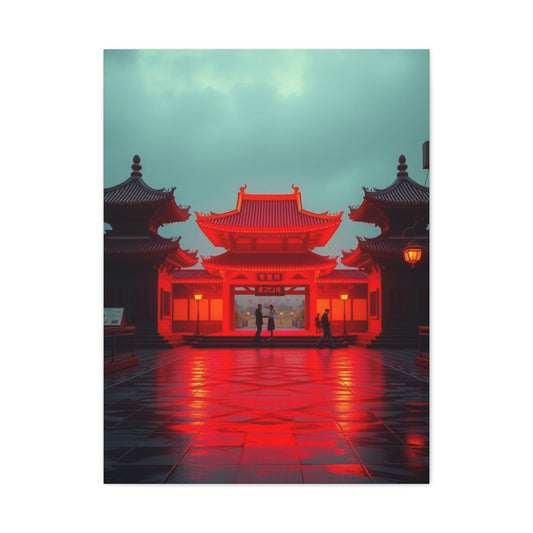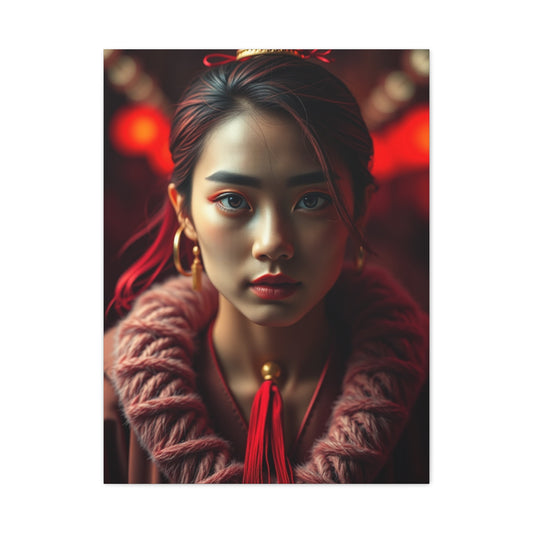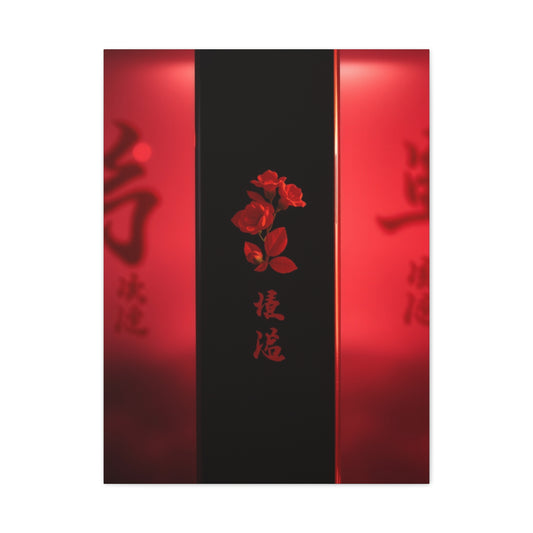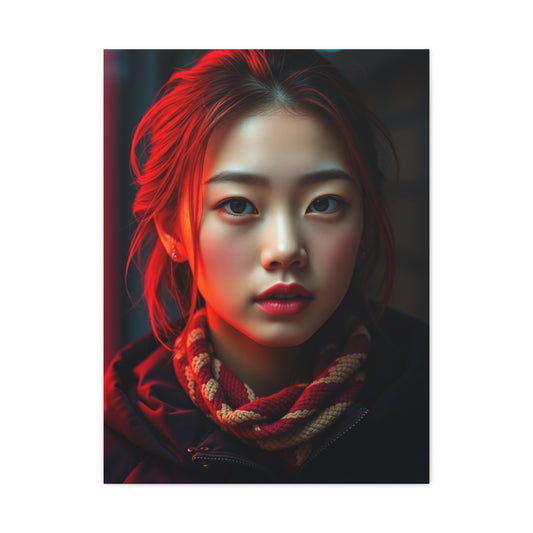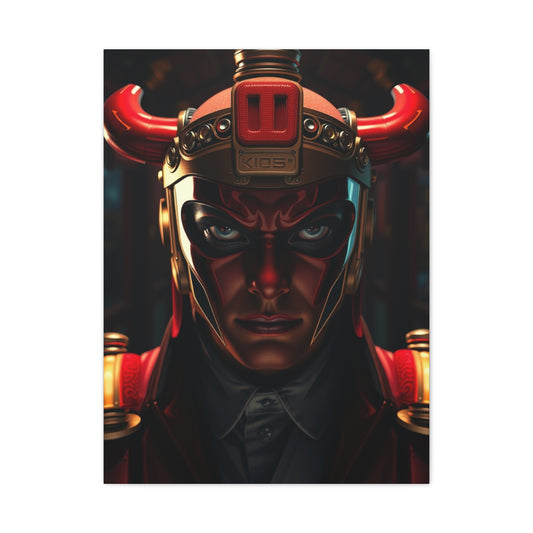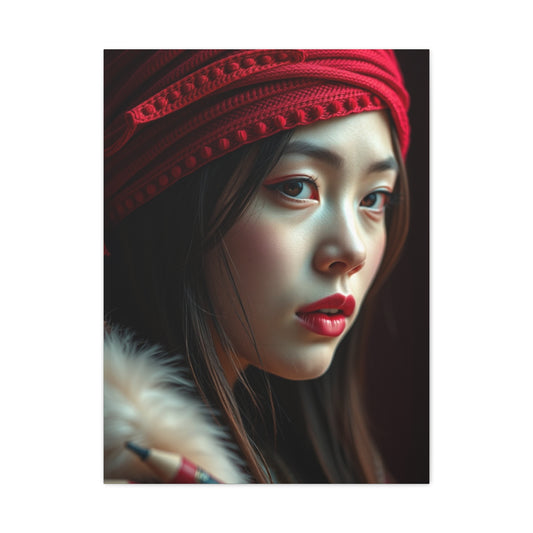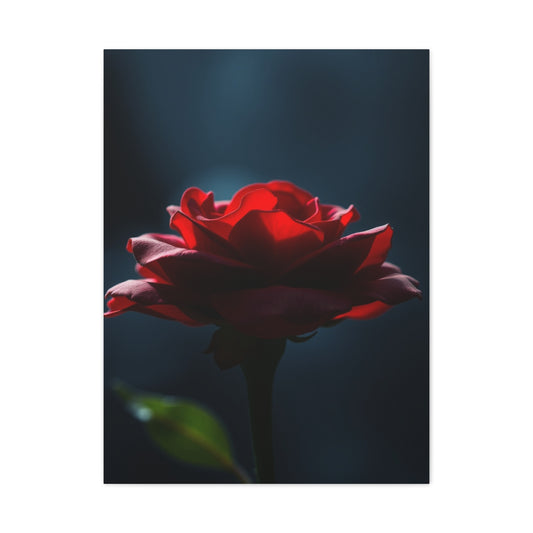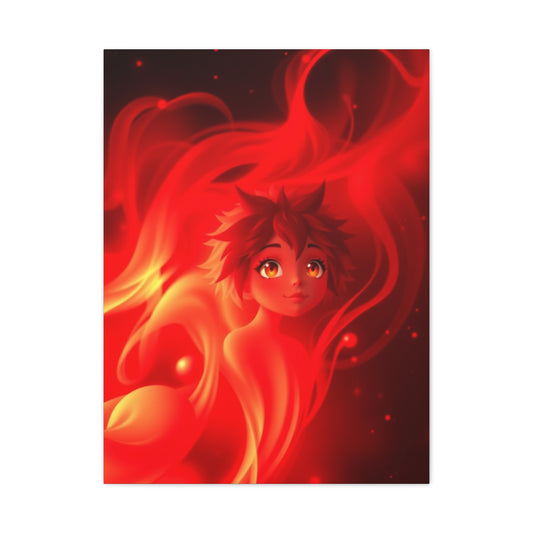How to Style Red Walls Using Bold and Beautiful Wall Art
Decorating with red walls presents an opportunity to infuse a space with vibrancy, energy, and personality. This striking hue is often associated with passion, power, and warmth, making it a bold choice for interiors. Beyond mere aesthetics, red influences emotions and perceptions, subtly shaping the atmosphere of any room. Whether you aim to create a bedroom that feels cozy and intimate or a living area that radiates energy, understanding how red interacts with light, textures, and decor elements is essential. Incorporating wall art strategically can further enhance the impact of red walls, providing focal points that balance intensity with elegance. The journey of integrating red walls into your interior design begins with a grasp of its historical significance, the psychological effects it evokes, and the artistic possibilities it unlocks. By exploring these dimensions, you can transform a simple wall into a canvas of style and personality.
Historical Background
Throughout history, red has been a color of distinction, used to symbolize power, celebration, and emotion. In ancient civilizations, red pigments were derived from natural minerals and dyes, often reserved for nobility or sacred spaces. In European palaces, red walls signaled grandeur and importance, while in Asian traditions, red has long been associated with prosperity and auspiciousness. These historical connotations of red continue to influence modern interior design, where the color remains a statement of confidence and creativity. Understanding these historical associations allows interior designers and homeowners to approach red walls with intention. By pairing this bold color with curated wall art and complementary furnishings, one can honor tradition while creating a contemporary, personalized environment.
Core Concepts and Foundations
The psychology of red in interior design is complex and multifaceted. Red is inherently stimulating, often increasing energy levels, encouraging conversation, and enhancing alertness. However, its intensity can overwhelm if not balanced with complementary colors, textures, or lighting. When decorating a bedroom, for example, red walls can evoke warmth and intimacy, but excessive saturation may hinder relaxation. Introducing elements such as soft textiles, muted neutrals, or carefully chosen wall art helps temper the vibrancy without diminishing its impact. Each shade of red carries its own emotional resonance: a deep burgundy evokes richness and sophistication, while a bright cherry tone energizes and invigorates. Lighting is another foundational consideration. Natural light interacts with red walls differently from artificial light, affecting mood and perception. Warm lighting can make red walls feel inviting and cozy, while cooler lighting may highlight their dramatic intensity. Wall art positioned thoughtfully can also help distribute visual weight and provide calming or contrasting points of interest.
Types and Categories
Red walls can be approached in various ways, depending on the desired mood and room function. Bold and saturated tones like vibrant crimson or scarlet create a dramatic, energetic atmosphere, ideal for accent walls or social spaces. Large pieces of wall art with complementary colors can anchor these bold walls. Deep and sophisticated shades such as burgundy, maroon, or oxblood exude elegance and intimacy, making them perfect for bedrooms or reading nooks, while metallic or textured wall art adds dimension and luxury. Muted and subtle tones like terracotta, rose, or dusty red provide warmth without overwhelming, allowing for flexible decor options; lighter wall art with subtle patterns or neutral frames balances these softer reds. Patterned or textured red walls incorporating murals or textured finishes can enhance the color without introducing new hues, and artwork can echo these patterns or provide contrast, creating layers of visual interest. By understanding these categories, homeowners can select a red wall approach that aligns with their personality, lifestyle, and aesthetic goals.
Practical Applications
Implementing red walls in modern interiors requires practical considerations alongside visual impact. Thoughtful furniture placement, layered textiles, and strategic wall art placement are key elements of success. Light-toned furniture such as cream, pale wood, or soft pastels can balance the intensity of red walls, reflecting light and opening up the space, while minimalist designs allow the red to remain the focal point. Combining textures like velvet cushions, knitted throws, or sheer curtains adds comfort and tactile interest, softening the vibrancy of red walls to make spaces inviting and cozy. Art serves as both a focal point and a harmonizing element. Abstract paintings, multi-shade red compositions, or contrasting colors can create visual depth, and positioning artwork strategically ensures the room feels curated rather than overwhelming. Proper lighting enhances the mood of red walls; dimmer switches allow control over intensity, creating different ambiance for day and night. Accent lighting, such as spotlights highlighting wall art, draws attention to decorative focal points while adding warmth and dimension. By combining these elements thoughtfully, red walls transform from a simple color choice into an immersive, stylish experience, balancing energy and comfort while ensuring the space remains striking and livable.
Emerging Trends in Wall Art
The landscape of wall art continues to evolve, influenced by contemporary aesthetics, technological innovation, and global cultural currents. In interiors featuring red walls, current trends focus on creating dynamic visual contrasts and layered experiences that transform a simple wall into a canvas of emotion and narrative. Large-scale abstract paintings are increasingly favored, their fluid compositions and bold splashes of color providing a counterbalance to the intensity of red walls. Textured and mixed-media pieces have gained prominence, incorporating materials such as resin, metal, and natural fibers to add tactile intrigue and depth. Minimalist wall art, emphasizing geometric shapes and monochromatic palettes, offers a sophisticated way to temper the vibrancy of red walls without diminishing their dramatic impact. Emerging trends also highlight personalization, with bespoke artworks tailored to the homeowner’s experiences, travel, or heritage, creating intimate and evocative focal points. Digital and interactive art forms are expanding the possibilities of wall art on red walls, incorporating projection, LED elements, and dynamic visuals that shift in response to light, motion, or sound, allowing interiors to become immersive and responsive environments. Curated groupings and gallery walls remain a significant trend, particularly when juxtaposed with red walls; the layering of different frames, textures, and scales creates depth and rhythm, guiding the eye and establishing narrative flow. Sustainability is also influencing trends, with artists and designers seeking environmentally conscious materials, reclaimed frames, and natural pigments to minimize ecological impact while maintaining aesthetic richness. By integrating these evolving approaches, red walls become living backdrops for artistic expression, where wall art functions as both decoration and a storytelling vehicle.
Step-by-Step Guides
Designing with red walls and complementary wall art can be approached systematically to ensure cohesion, balance, and visual harmony. The first step is selecting the appropriate red tone, considering natural and artificial lighting as well as the intended mood of the space. Deep reds convey intimacy and luxury, while brighter reds energize and enliven. Once the wall color is established, planning the placement of wall art becomes essential. Begin by identifying focal points, such as the area above a bed, a sofa, or an entryway wall, and decide whether a single large artwork or a curated grouping is most appropriate. Measure wall dimensions to ensure proportionality and to prevent the artwork from feeling dwarfed or overpowering. The next step involves choosing pieces that provide contrast or complement the red walls; artworks incorporating blues, greens, whites, or metallic tones often create striking visual tension without clashing. Texture and medium should also be considered; canvas, wood, metal, and mixed media offer varying degrees of reflectivity and tactility, contributing to layered depth. The third step is experimentation with placement and spacing, moving pieces temporarily, and visualizing their effect in different lighting conditions. This iterative approach ensures that wall art interacts harmoniously with furniture, textiles, and accent elements, enhancing the overall atmosphere. Lighting installation is another integral step, with directional, ambient, and accent lighting used to highlight artwork and modulate the perception of red walls. Finally, integrating smaller decorative elements, such as sculptural objects, mirrors, or plants, can enrich the composition, creating a multi-sensory environment where red walls and wall art coalesce into a sophisticated, dynamic interior.
Sustainability and Ethical Considerations
As interior design and wall art evolve, sustainability has become a critical consideration, particularly in projects featuring bold red walls that may require high-quality pigments and materials. Eco-friendly paints with low volatile organic compounds (VOCs) are preferred, providing rich, lasting color without compromising indoor air quality. The selection of wall art is similarly affected by sustainability concerns, with growing interest in recycled or reclaimed materials, natural fibers, and non-toxic finishes. Ethical sourcing of artwork ensures that artists are fairly compensated and that cultural artifacts are respected, avoiding appropriation while fostering authentic expression. Additionally, designers are embracing modular and multifunctional art installations that can be adapted or relocated, reducing waste and extending the lifespan of decorative elements. Sustainability in textiles, framing, and accessory integration complements these principles, promoting a holistic approach where red walls serve as a backdrop for environmentally conscious creativity. By prioritizing ecological responsibility alongside aesthetic innovation, interiors achieve a balance between visual impact and conscientious practice, demonstrating that bold design need not compromise ethical standards.
Global Influences in Wall Art
Wall art has always been shaped by the convergence of cultures, and modern interiors reflect this global tapestry, especially when paired with red walls. Asian design traditions, for example, celebrate red as a symbol of fortune, vitality, and celebration, often paired with gold or black accents in artwork to evoke a sense of luxury and auspiciousness. European influences contribute classical motifs, trompe-l’oeil techniques, and richly layered canvases that convey depth and sophistication. African and Latin American art introduce vibrant patterns, hand-crafted textures, and bold colors that resonate strongly against red walls, bringing warmth and narrative energy to the space. Contemporary global trends encourage fusion, blending traditional motifs with modern abstraction to create pieces that are at once familiar and innovative. This cross-cultural synthesis is evident in mixed-media installations, digital prints, and wall-mounted sculptures, where influences converge to create immersive and dynamic visual experiences. Incorporating global perspectives ensures that interiors with red walls transcend local style limitations, offering diverse, meaningful, and visually captivating environments where wall art becomes both a decorative and cultural statement.
Advanced Styling Techniques for Red Walls and Wall Art
Creating a cohesive and captivating interior with red walls requires an understanding of advanced styling techniques that merge color, texture, and visual storytelling. One essential approach is layering visual elements to create depth and dimension. Wall art functions as both anchor and accent, allowing for the interplay of boldness and subtlety. Combining pieces of varying scales, textures, and materials enhances interest while preventing the room from feeling flat or monotonous. Strategic placement of artwork relative to furniture, lighting, and architectural features ensures visual balance, guiding the eye naturally across the space. Incorporating unexpected textures, such as woven panels, metallic finishes, or resin overlays, introduces tactile intrigue that complements the warmth and energy of red walls. Another advanced technique involves harmonizing color palettes through analogous or contrasting tones. For example, integrating jewel tones like emerald, sapphire, or amethyst within wall art can create a luxurious interplay that enhances the emotional impact of red walls, while subtle neutrals in adjacent textiles or decor maintain equilibrium. Lighting, a pivotal factor in advanced styling, allows the transformation of red walls throughout the day. Layered lighting, including ambient, task, and accent sources, emphasizes wall art and architectural details while modulating intensity to suit mood and function. Dimmer systems, directional fixtures, and reflective surfaces can further amplify the dimensionality of the walls, making artwork appear more immersive and engaging. Incorporating organic and artisanal elements, such as hand-thrown ceramics, carved wood frames, or textile art, juxtaposed with contemporary pieces, provides a layered, worldly aesthetic. These elements imbue red-walled spaces with narrative depth, ensuring interiors feel curated, personal, and timeless. Advanced styling also considers spatial psychology, balancing visual stimulation with areas of calm. Red walls naturally command attention, and integrating wall art that introduces both contrast and continuity allows the room to feel energized yet harmonious. Designers often employ focal art pieces to anchor zones, while smaller complementary works maintain rhythm and visual flow. In sum, advanced styling transforms red walls from a singular color statement into a multidimensional canvas, with wall art acting as the connective tissue that orchestrates texture, color, and emotion into a cohesive, elevated design narrative.
Functional and Aesthetic Considerations
Red walls, while visually striking, must be paired with functional design strategies to ensure livability. One consideration is the scale of wall art relative to the room’s proportions. Oversized pieces can anchor spaces but may overpower smaller rooms, whereas clusters of smaller works can generate rhythm and provide a gallery-like quality. Furniture selection plays a complementary role; light-toned or reflective surfaces amplify the vibrancy of red walls, while neutral or muted textiles prevent sensory overload. Functional considerations also extend to lighting, circulation, and acoustic qualities, ensuring that the room not only looks dramatic but also accommodates everyday use comfortably. Wall art can be curated to support functionality, such as using framed mirrors to enhance light reflection or incorporating modular, changeable pieces that allow the room’s energy to adapt seasonally. Textural balance is another key consideration, with soft fabrics, smooth surfaces, and natural elements offsetting the intensity of red walls, making the interior both aesthetically compelling and psychologically restorative. Color theory informs these decisions, guiding the integration of secondary tones, accent pieces, and artwork that complement red without competing, creating an orchestrated visual symphony that respects both beauty and utility.
Color Psychology and Emotional Impact
Explain how different shades of red evoke varying emotions—deep reds for intimacy and luxury, brighter reds for energy and stimulation. Discuss how wall art can reinforce or balance these emotional effects, e.g., calming abstract pieces versus bold geometric designs. Include cultural interpretations and how colors affect mood in different rooms.
Layering Textures and Materials
Discuss combining smooth, reflective surfaces with textured elements like woven textiles, ceramics, or metalwork. Explain how layering creates depth on red walls, and how wall art with varied textures interacts with furniture, rugs, or curtains. Include examples of modern techniques like resin overlays or 3D wall panels.
Spatial Planning and Focal Points
Detail strategies for positioning furniture and artwork to guide attention. Explain how red walls naturally command focus and how wall art can be used to create secondary focal points or balance visual weight. Include examples like gallery walls or oversized statement pieces.
Lighting Techniques and Ambiance Control
Explore natural versus artificial lighting and its effect on red walls. Explain the use of dimmers, layered lighting, and accent lighting to highlight wall art and adjust the room’s mood. Mention reflective surfaces or metallic frames as tools to amplify light.
Integration of Natural and Organic Elements
Incorporating natural and organic elements can create a harmonious balance with red walls, softening their intensity while bringing warmth and texture to interiors. Plants are one of the most effective tools; their greenery contrasts beautifully with red, providing visual relief and a calming effect. Large potted plants, hanging greenery, or even small tabletop arrangements can be strategically placed near wall art to create natural framing, enhancing the impact of the pieces while connecting the room to nature. Wood, whether in furniture, frames, or accent panels, introduces an organic texture that complements the vibrancy of red walls. For example, a handcrafted wooden frame around a neutral-toned or earth-inspired artwork can both anchor the piece and tie it to the natural world. Stone elements such as marble tabletops, slate tiles, or decorative rock sculptures can provide grounding texture, creating a sense of permanence and solidity in a space dominated by bold color. Handcrafted art, including woven tapestries, ceramic sculptures, or artisanal wall hangings, contributes to a tactile richness that offsets the red walls’ visual intensity. By integrating these natural motifs and materials, designers can create an inviting, earthy atmosphere that feels alive, balanced, and welcoming, demonstrating that red walls can coexist harmoniously with organic beauty rather than overpower it.
Multi-Functional and Adaptive Spaces
Red walls and curated wall art can be used to define and differentiate zones within open-plan layouts, enhancing both aesthetic appeal and functional flow. In living-dining combinations, red accent walls can act as visual separators without requiring physical partitions, with artwork anchoring each area. For instance, a large canvas over the dining area paired with smaller sculptural pieces near the living space delineates zones while maintaining a cohesive design language. Modular art installations, interchangeable frames, or rotating wall panels allow homeowners to adapt the room for various activities or seasonal changes, making spaces flexible without repainting. In home offices or multi-use rooms, red walls can energize work areas while calming tones and complementary wall art define relaxation corners. By thoughtfully integrating adaptable art and decor, interiors remain versatile, functional, and visually engaging, allowing red walls to serve multiple purposes without overwhelming any single zone.
Artistic Styles and Wall Art Curation
A wide array of artistic styles can harmonize with red walls, each evoking different moods and atmospheres. Abstract artworks, with fluid forms or bold brushstrokes, complement red walls by creating dynamic visual interest, while minimalist pieces provide restraint and balance, allowing the color to take center stage. Contemporary and mixed-media works incorporate texture, metallics, and unconventional materials, enhancing depth and dimensionality on red backdrops. Sculptural art adds three-dimensionality, encouraging interaction and shifting perspectives within the room. Effective wall art curation involves balancing scale, color, and theme, ensuring that each piece contributes to a cohesive visual narrative. Mixing cultural influences, such as pairing Asian-inspired motifs with modern abstracts, or referencing historical patterns in contemporary pieces, adds richness and global resonance. By thoughtfully selecting and arranging artworks, red walls become a canvas for diverse expression, balancing boldness with serenity and turning interiors into curated, immersive environments.
Sustainability and Eco-Friendly Design
Sustainable design practices are increasingly integral to modern interiors, and red walls can accommodate environmentally conscious choices without sacrificing aesthetic impact. Low-VOC paints or natural pigments preserve indoor air quality while delivering vibrant, long-lasting color. Wall art created from reclaimed, recycled, or ethically sourced materials supports sustainability while enhancing texture and narrative depth. Eco-friendly textiles, bamboo frames, and biodegradable decorative elements can be seamlessly integrated with red walls, maintaining visual sophistication and a luxury feel. This approach demonstrates that bold color does not necessitate environmentally costly materials; rather, careful selection and creative sourcing can result in interiors that are visually stunning, ecologically responsible, and emotionally satisfying.
Technological Integration and Innovation
Emerging technologies are reshaping the way red walls and wall art interact. Digital canvases, projection mapping, and smart LED panels allow dynamic, changeable art displays, providing endless options for adapting spaces to mood, season, or activity. Interactive wall art responds to motion, light, or sound, creating immersive, multisensory environments that enhance both aesthetics and user experience. Smart lighting systems, dimmable LEDs, and color-tunable fixtures allow red walls to transition between warm and vibrant tones, complementing art pieces and enhancing ambiance. Integrating technology with traditional wall art offers flexibility and creativity, merging innovation with classical design principles, and transforming red-walled spaces into adaptive, expressive, and futuristic interiors.
Personalization and Storytelling
Wall art provides a powerful means to personalize red-walled spaces, making interiors resonate with individual experiences and memories. Travel-inspired pieces, family photographs, or commissioned artworks tell stories that imbue a room with character and identity. Personalization extends to color, theme, and placement; for example, grouping artworks by color harmony or narrative theme allows red walls to act as a unifying backdrop for diverse stories. Beyond aesthetic impact, personalized wall art fosters psychological comfort and emotional connection, transforming a room from a visually striking space into a meaningful environment that reflects its inhabitants’ passions, heritage, and personality.
Seasonal and Trend Adaptation
Red walls provide a stable backdrop for seasonal and trend-based decor updates. Artwork, textiles, and small decorative accents can be rotated or refreshed according to the season, such as warm-toned pillows and autumn-inspired wall art in fall, or airy, botanical prints in spring. Metallic accents, lightweight fabrics, or thematic sculptural elements can complement red walls throughout the year, creating dynamic interiors that evolve without requiring repainting. This flexibility enhances longevity and allows homeowners to maintain freshness and relevance in interior design while celebrating the timeless impact of bold red walls.
Expert Insights and Practical Advice
Interior design experts emphasize intentionality, planning, and proportional balance when working with red walls. Common pitfalls include overcrowding walls with competing artwork, selecting mismatched frames, or neglecting lighting. Experts recommend testing shades, considering scale, and using wall art to create balance and hierarchy. Modular artworks, curated gallery arrangements, and reflective surfaces can prevent visual fatigue while enhancing the vibrancy of red walls. Long-term strategies include rotating art pieces, layering textures, and integrating multi-functional furniture and lighting, ensuring that interiors remain engaging, practical, and visually harmonious over time.
Personalization and Curated Narratives
The power of red walls is magnified when paired with wall art that tells a personal story or reflects cultural influences. Collecting artwork from travel, family heritage, or local artisans imbues a space with uniqueness and character, transforming interiors into living narratives rather than static design statements. Curated groupings allow homeowners to establish thematic coherence, whether exploring natural landscapes, abstract interpretations, or modern expressionism, providing cohesion against the intensity of red walls. Personalized wall art can also serve functional purposes, such as mood setting or focus delineation within multi-use spaces. Incorporating three-dimensional art or sculptural pieces encourages tactile interaction and spatial dialogue, creating a more immersive experience. By blending personal narratives with global influences, red-walled interiors transcend stylistic constraints, offering a balance between universal aesthetics and intimate storytelling.
Future Directions and Innovation
Red walls and wall art continue to evolve alongside technological and cultural developments. Smart materials and interactive artworks are increasingly integrated, allowing interiors to adapt dynamically to light, sound, or environmental changes. Augmented reality installations and digital canvases offer evolving compositions that respond to user interaction, merging the traditional appeal of red walls with cutting-edge innovation. Sustainability remains a guiding principle, with designers exploring renewable materials, eco-conscious pigments, and upcycled artworks to reduce environmental impact while maintaining aesthetic sophistication. Global influences further expand creative possibilities, with cross-cultural motifs, hybrid techniques, and artisanal collaborations enriching design vocabulary. These innovations encourage designers and homeowners to experiment boldly, positioning red walls as versatile, future-facing backdrops for artistic exploration.
Expert Recommendations
Design authorities emphasize balance, adaptability, and intentionality when working with red walls and wall art. They advise starting with a clear vision that considers spatial function, emotional impact, and lighting conditions. Wall art should be selected for proportion, narrative resonance, and material synergy with surrounding elements, ensuring that it complements rather than competes with the intensity of red walls. Layered textures, reflective surfaces, and lighting modulation are highlighted as essential strategies for managing visual weight and enhancing depth. Experts also recommend iterative testing, such as placing samples, exploring different compositions, and adjusting illumination, allowing homeowners to refine aesthetics and functional outcomes. Integrating personal or culturally meaningful artwork is encouraged, reinforcing individuality and creating immersive, engaging interiors that feel both curated and lived-in.
Historical Influence of Red in Interior Design
Red has long held a place of prestige and symbolism in interior design. Historically, palaces in Europe and Asia often featured red walls to signify wealth, power, and ceremonial importance, while temples incorporated deep crimson and vermilion tones to invoke spiritual energy and auspiciousness. Traditional homes in many cultures utilized red to evoke warmth and protection, often combined with natural materials such as wood or stone. Modern interiors draw from these historical principles, blending the richness and drama of red with contemporary sensibilities. Wall art can reference historical motifs or techniques, bridging past and present while creating interiors that feel timeless yet fresh. Using red walls alongside curated pieces inspired by historical patterns or traditional craftsmanship adds depth, narrative, and a sense of continuity to modern spaces.
Balancing Bold Colors with Neutrals
While red walls are inherently dominant, pairing them with neutral tones is essential for achieving balance. Creams, beiges, soft greys, and pale woods can neutralize intensity and create a restful visual space. Wall art serves as a bridge, seamlessly integrating neutral and bold tones. For instance, a large abstract painting incorporating soft neutrals alongside splashes of red can harmonize a room, making it feel cohesive rather than overwhelming. Accents like cushions, throws, or rugs in subtle tones complement red walls while allowing bold artwork to stand out, ensuring that the vibrancy of the walls is balanced without dulling their dramatic impact.
Patterns and Geometric Designs
Incorporating patterns into interiors with red walls adds dynamism and rhythm. Stripes, chevrons, or abstract geometries can break the solid intensity of a red backdrop, introducing visual interest. Wall art can echo these patterns or provide contrast, reinforcing the design theme while preventing monotony. Large artworks create dominant focal points, whereas smaller pieces can add a curated gallery effect, drawing the eye across the room. Patterned textiles and accessories further enhance this layering, creating a multidimensional space where red walls serve as a bold but balanced canvas.
Creating Visual Hierarchy in a Room
Visual hierarchy ensures that a room with red walls feels structured and intentional rather than chaotic. Red walls naturally command attention, but the eye needs secondary anchors to guide focus. Wall art can serve as these anchors, directing attention to key areas while complementing furniture placement and lighting. Techniques such as layering artwork, balancing proportions, and varying frame sizes create depth and narrative flow. Combined with thoughtful furniture arrangement, this approach ensures the room feels harmonious, where red walls and art coexist as part of an orchestrated visual composition.
Mood and Functionality for Different Rooms
Red walls evoke different energies depending on the room and context. In bedrooms, deeper reds paired with soft textiles and calming wall art can promote intimacy and warmth. Living rooms benefit from brighter reds and energetic artworks that stimulate conversation and social engagement. In dining areas, red can enhance appetite and create a lively atmosphere, while in offices, carefully balanced red walls with abstract or geometric art can invigorate creativity without causing fatigue. Matching shade, texture, and wall art to room function allows red walls to serve both aesthetic and practical purposes.
Combining Cultural and Contemporary Influences
Red walls provide a versatile backdrop for blending cultural motifs with contemporary design. Asian-inspired pieces, tribal textures, or European classical motifs can coexist with modern minimalist wall art to create eclectic yet cohesive interiors. This fusion celebrates global artistry and personal taste, making each room a narrative tapestry. Red walls unify these diverse elements, providing a common visual thread that elevates both traditional and contemporary artworks while avoiding stylistic clash.
Interactive and Multi-Sensory Wall Art
Modern interiors increasingly embrace interactivity. Touchable, kinetic, or sound-responsive wall art can transform red walls into immersive experiences. For example, sculptural panels or LED-integrated artworks respond to motion or ambient light, engaging the senses and making spaces dynamic. These techniques enrich red-walled interiors, allowing homeowners to interact with their surroundings and creating an environment that feels alive and adaptive.
Seasonal Rotation and Refresh Ideas
Red walls can remain constant while seasonal decor updates refresh a room’s aesthetic. Swapping wall art, textiles, or small decorative accents according to season allows interiors to feel current without repainting. For instance, light, airy fabrics and nature-inspired artwork in spring contrast with warmer textiles and metallic accents in winter. This approach maximizes the longevity and flexibility of red walls, providing endless opportunities for creativity and style adaptation.
Color Layering and Accent Strategies
Introducing secondary colors enhances the visual depth of red walls. Metallic frames, gold or brass accents, and jewel-toned artworks add luxury and richness. Layering colors in textiles, furniture, and accessories allows the space to feel multidimensional, while accent lighting emphasizes the textures and tones of both walls and wall art. Thoughtful color integration prevents red from becoming overpowering, maintaining a dynamic yet balanced interior.
Psychological and Emotional Design
Red strongly influences mood, stimulating energy and passion while potentially inducing tension if not moderated. Wall art can temper or amplify these effects. Calming abstract pieces or nature-inspired artworks can offset red’s intensity, creating a serene atmosphere, while bold geometric or high-contrast art can energize social or workspaces. Understanding these psychological interactions allows designers to use red walls strategically, shaping both ambiance and emotional impact.
Accessibility and Practical Tips
Red walls require practical considerations for hanging wall art safely and effectively. Proper anchoring, spacing, and proportional sizing prevent overcrowding or imbalance. Durable materials like canvas, metal, or tempered glass are recommended for longevity, while lighting placement ensures that artworks are visible without glare. Practical strategies also include evaluating circulation, furniture clearance, and sightlines to create functional and visually appealing interiors.
Integrating Technology with Traditional Design
Digital frames, projection art, or smart LED panels can complement traditional wall art on red walls. Interactive and changeable art options allow homeowners to experiment with color, form, and ambiance without permanent alterations. Combining technology with conventional techniques bridges modern innovation and classical aesthetics, giving red walls a contemporary, adaptive edge.
Sustainability and Ethical Curation
Eco-conscious design enhances the impact of red walls while supporting ethical practices. Reclaimed wood frames, natural pigments, and responsibly sourced textiles promote sustainability. Wall art made from recycled or locally crafted materials reinforces this approach. Thoughtful selection of eco-friendly products ensures that interiors remain visually striking while minimizing environmental impact, marrying aesthetics with responsibility.
Expert Tips for Long-Term Design
Professionals recommend maintaining red walls with high-quality, durable paints and protective finishes. Wall art placement should allow for air circulation and prevent exposure to direct sunlight that may fade colors. Long-term strategies include modular artwork arrangements, seasonal refreshes, and layering techniques that allow interiors to evolve. Experts emphasize planning, proportion, and intentionality to create spaces that remain vibrant, cohesive, and enduring.
Inspiring Case Studies and Real-Life Examples
Real-world interiors provide insight into successful design with red walls and curated wall art. For instance, a living room featuring deep crimson walls paired with gold-accented abstract paintings creates warmth and elegance, while a minimalist bedroom with muted red walls and geometric wall art balances energy and serenity. Case studies highlight the integration of furniture, textiles, lighting, and cultural motifs, providing practical examples of how red walls can be transformed into versatile and captivating spaces.
Future Trends and Predictions
Looking ahead, red walls and wall art are expected to embrace technological interactivity, sustainability, and cross-cultural fusion. Digital installations, adaptive lighting, and modular artwork will redefine how spaces evolve. Global influences and ethical practices will continue shaping aesthetic choices, while advanced layering, multi-sensory designs, and immersive compositions will allow red walls to remain at the forefront of interior innovation. Future interiors will increasingly blend bold color with intelligent design, creating emotionally resonant, functional, and visually engaging environments.
Conclusion
Red walls offer an unparalleled opportunity to infuse interiors with vibrancy, energy, and emotional resonance. When combined with thoughtfully selected wall art, they transform ordinary spaces into expressive environments that reflect personality, culture, and aesthetic ambition. Through careful attention to color selection, texture layering, lighting, and spatial arrangement, red walls can be harmonized with complementary furnishings and artwork, creating interiors that balance boldness with comfort. Advanced styling techniques, functional planning, and curated narratives ensure that these spaces remain visually compelling while supporting practical living needs. Emerging trends, sustainability considerations, and global influences continue to expand the creative possibilities of red walls, encouraging innovation and experimentation. Expert insights affirm the importance of intentionality, proportion, and adaptability, guiding the integration of wall art and decor elements to achieve cohesive, dynamic, and timeless interiors. Ultimately, red walls are more than a color choice; they are a canvas for storytelling, self-expression, and artistic exploration, where wall art serves as both companion and catalyst, transforming spaces into living, breathing environments that inspire, energize, and captivate.

